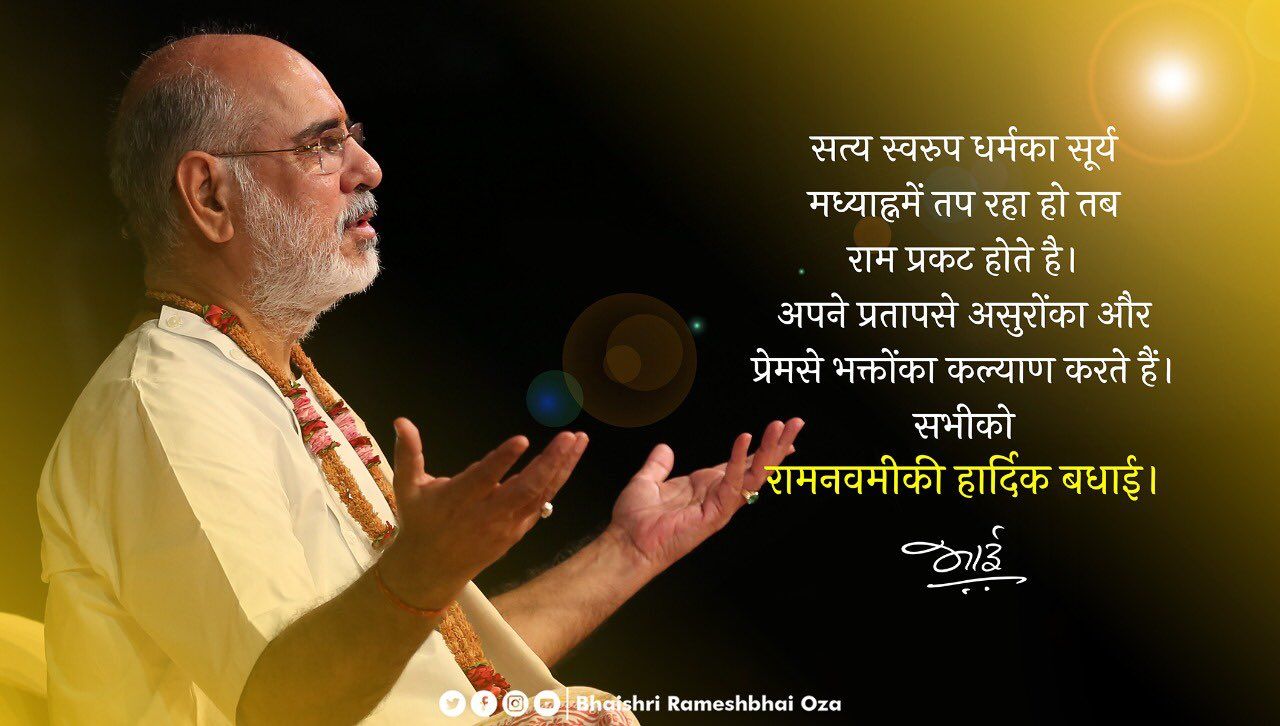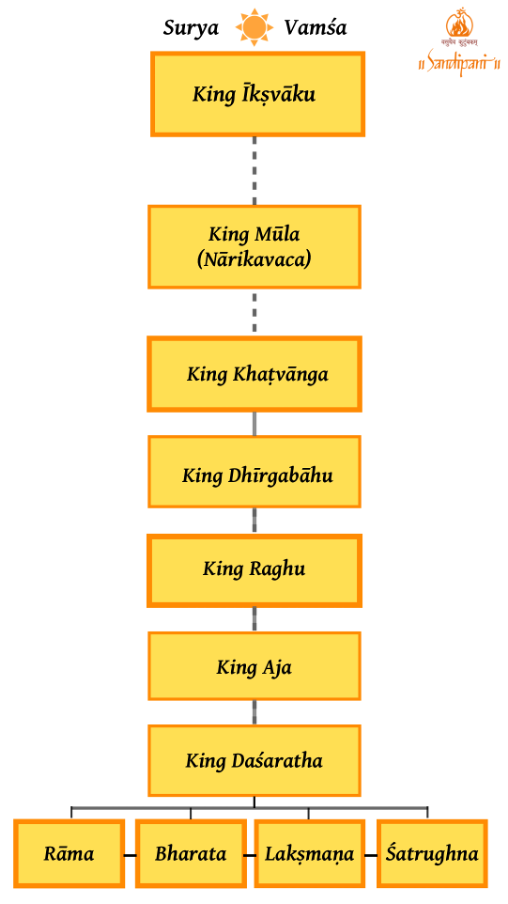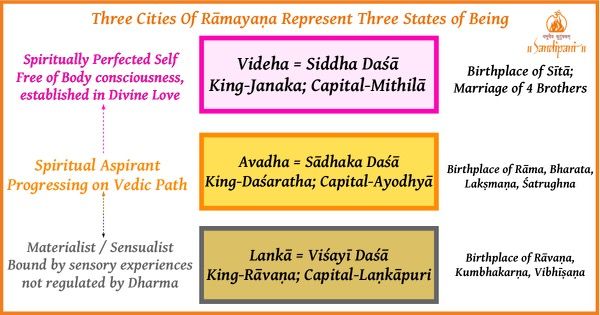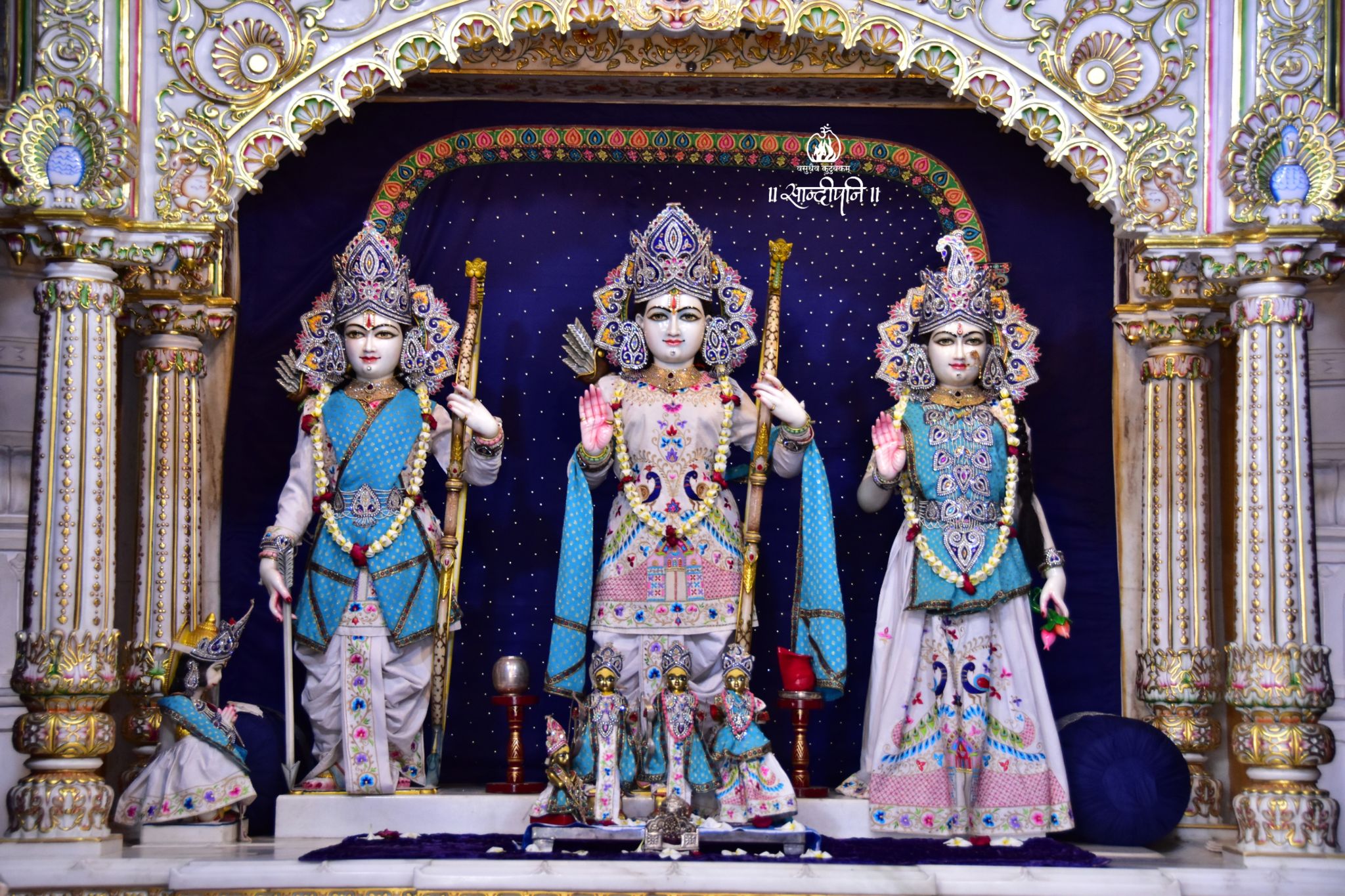Ten Lesser-Known Facts about Ram’s Royal Lineage
– Shlok of the Week 17 – Shrimad Bhagavat – 9.10.4

‘When the Sun of Dharma, in the form of Truth, is burning brightly at midday – that is when Lord Rāma is born! He ensures the felicity of those who are evil through his heroism; and of devotees through his Love. Heartfelt felicitations to all on RāmaNavamī! #Saprem_Harismaran
@PPBhaishri
Ten Lesser-Known Facts about Ram’s Royal Lineage
1) Lord Rāma is also known as Raghukula Tilaka – the crowning glory of the illustrious ‘House of Raghu’. Who is Raghu? There are two main lineages of Kings devoted to Sad-Dharma (virtuous code of conduct), as mentioned in the ninth canto of the Śrīmad Bhāgavatam – Sūryavaṃśis (those belonging to the Solar Dynasty) and Candravaṃśi (those belonging to the Lunar Dynasty). Grandson of the great King Khaṭvāṅga, King Raghu was such a noble and valorous King of the Solar Dynasty that the entire dynasty was renamed after him to be “Raghukula”. The original name of this lineage was ‘Ikśvāku vaṃśa’, named after the first Sūryavaṃśi King Ikśvāku, son of the Sun God). (Ref: ŚB 9.9.39–9.10.2)
2) King Khaṭvāṅga is famous for having fought on behalf of the Devatās against the Asuras and achieved victory for them. Yet, He was most devoted to the Brāhmaṇas above all else and he chose to decline any boons from the pleased Devatās and instead return from Heaven to his Kingdom of Avadha for the final moments of his lifespan, and spent it immersed in Lord Vāsudeva (in the form of his own Ātmā). This very same Lord Vāsudeva manifests in this dynasty with His four forms (vāsudeva catuṣṭaya), as the sons of King Daśaratha. (Ref: ŚB 9.9.47.49)
3) Daśaratha represents the Vedas (vedo daśaratho nṛpaḥ). The reign of the Vedās (veda-rājya) is the foundation stone for the righteous reign of King Rāma (rāma-rājya). The discipline of the code of conduct as enshrined in the Vedas is the basis for the rule of mutual love and affection amongst all of society, which is the hallmark of Rāma-Rājya. ‘saba nara karahī paraspara prītī’ (Śrī Rāmacaritamānasa | Uttarakāṇḍa | Dohā 20 | Caupāī 1).
4) King Daśaratha rides upon the chariot of the body with all ten horses (of the five organs of action and five organs of knowledge) all progressing towards the supreme Truth, whilst disciplined by the reins of the vidhi and niṣedha (dos and dont’s) of the Vedic Path. The Vedas are ‘trikāṇḍi’ with the three aspects of:
(i) Knowledge (Jñāna-śakti) represented by Queen Kauśalya (mother of Rāma);
(ii) Devotion (Upāsanā-śakti) represented by Queen Sumitrā (mother of Lakṣmaṇa & Śatrughna);
(iii) Action (Kriyā-śakti) represented by Queen Kaikeyi (mother of Bharata).

5) As the King of this lineage rule over their ancestral Kingdom of ‘Kośala-Deśa’, whose capital is located on the banks of the River Sarayū – the sacred city of Ayodhyā. This is why it is famous as the birthplace of Lord Rāma and his brothers and the King and his wives reside in this capital.
6) Further to the geo-political, economic significance of the Kingdom of Kośala and its capital, the spiritual significance of Ayodhyā is that it is the first of the seven cities which are the portals to liberation (mukti-dvāra). ‘ayodhyā-mathurāmāyākāśīkāṃcītvantikā, purī dvārāvatīcaiva saptaite mokṣadāyikāḥ.’
7) Ayodhyā as a city (puri) metaphysically represents the state of existence (bhūmikā) of a spiritual aspirant (sādhaka avasthā). A resident of this city is governed by Sanātana Vedic Dharma and Lord Rāma is considered the very embodiment of Dharma. The war of Rāma and Rāvaṇa represents the victory of the Vedic principles of King Daśaratha (dāśarathi vicāradhārā) over the materialistic principles of the ten-headed King of Laṇkā (daśānanī vicāradhāra). All living beings seek happiness, however the path chosen to fulfil their desires determines their state of being. The former believes in self-discipline and surrender whilst the latter believes in over-indulgence and snatching.

8) Seeking refuge in the King of Kośala for protection (kosalendro’vatānnaḥ ŚB 9.10.4) is invoking the principle that Dharma upholds and protects one who protects Dharma. dharmo rakṣati rakṣitaḥ – (Ref: Manusmṛti 8.15). Lord Rāma first protected the Dharma of Satya by renouncing his anointment as sovereign and instead leaving for the forest, where he endured great hardships, for the principle of Truth. Thus, may this tapasvi Lord indeed protect us.
9) The spiritual knowledge of striving for success with no expectations, no discrimination and no vacation (with full dedication) is embodied in the Sun God, who received this spiritual instruction of perfection in Karma Yoga directly from Lord Nārāyaṇa. The founder of the Solar Dynasty, Sūrya (Vivsvāna) in turn instructed this to Manu Maharāja, who then passed on this knowledge to his son, King Ikṣvāku, as described by Lord Krṣṇa himself.
śrī-bhagavān uvāca
imaṃ vivasvate yogaṃ
proktavān aham avyayam
vivasvān manave prāha
manur ikṣvākave’bravīt
Bhagavad Gītā 4.1
10) In the Śrīmad Bhāgavatam; Lord Rāma’s pastimes can be found summarised within three adyāyas in the first half of the ninth canto (ŚB 9.10/11/12). This canto is called ‘Īśānukathā’ and represents the lineages of Kings who lived dedicated to the Lord and the virtuous conduct that pleases Him. This canto consists of twenty-four adyāyas (some scholars say twelve chapters represent the solar dynasty whilst twelve represent the lunar dynasty). It is perceived as the ‘left chest’ of the Lord in His word form of the Śrīmad Bhāgavatam.
🔔 Click-Here to Learn-More about Lord Rāma
☀️ Did-You-Know? Lord Nārayaṇa instructed this knowledge to Sūrya (Vivsvāna) who in turn instructed this to Manu Maharāja, later instructing this knowledge to King Ikṣvāku hence he was a disciple of Manu Mahāraja.
🎧 Click-Here to Listen:
🔔 Share your answer or a fun-fact in the comments section below……

About this Article
This is a part of an ongoing series to learn a Shlok a week from the Purushottam Maas Shrimad Bhagavat Katha by Pujya Bhaishri Rameshbhai Oza.
We hope devotees are able to savour a few fun facts on these verses with an enhanced interest for the context and divine nuances through this series.
This Article is the 17th in the ‘Shlok of the Week’ Series.
Series by Rishi Harshitbhai Shukla
Nimishaben Sadhu (India);
Rajeshbhai Purohit (UK).
#ShrimadBhagavat #Mahatmya #ShlokOfTheWeek #SVN_SOW #ScriptureOfLove